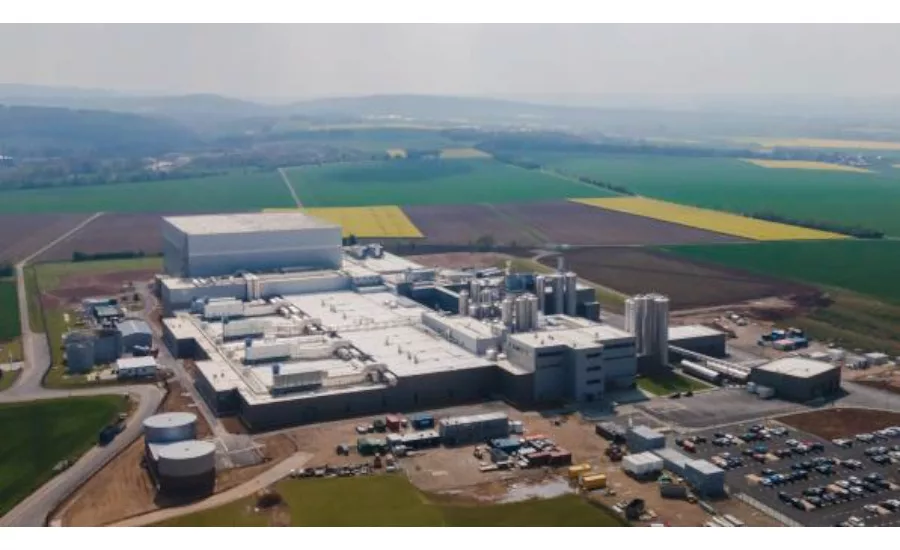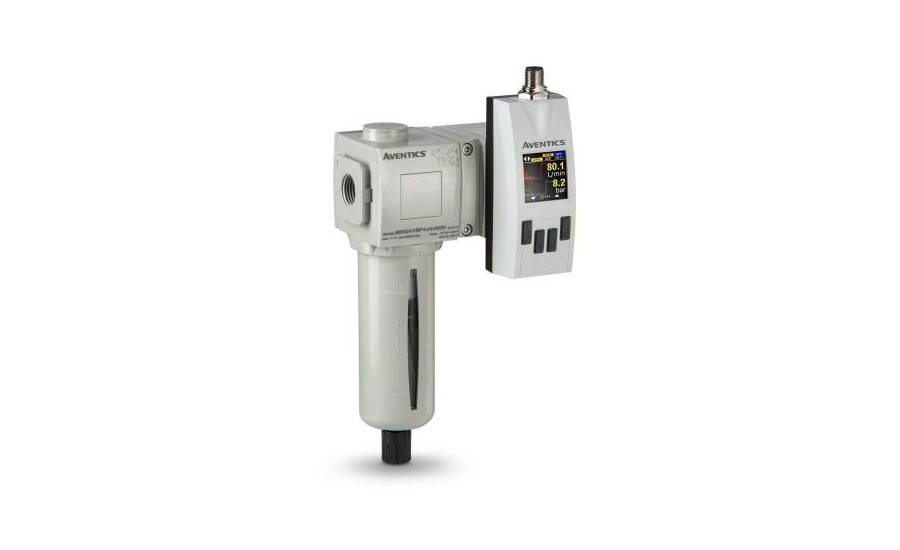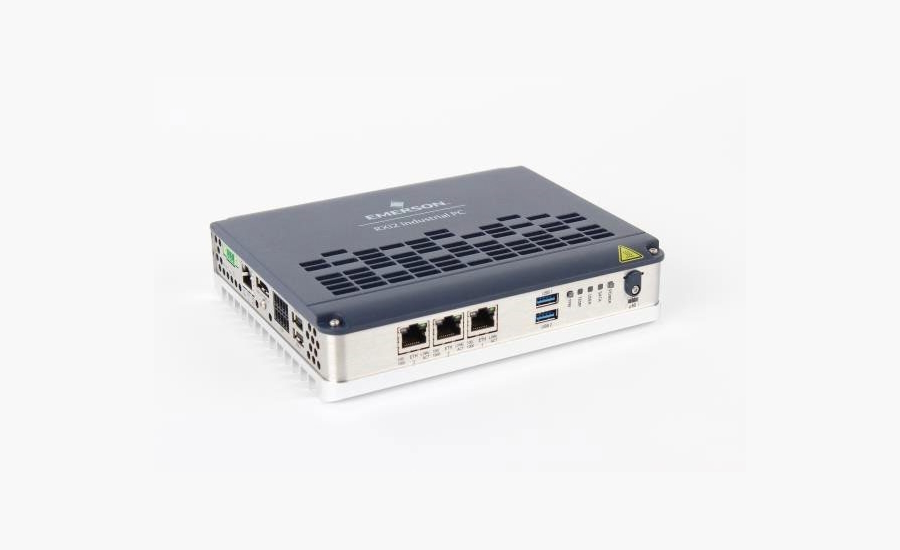Intelligent Energy-Monitoring Devices are the Cream of the Crop in Europe’s Largest Dairy Plant

The Hochwald dairy plant, located in Mechernich, Germany. Image courtesy of Hochwald
Even the smallest leak in a compressed air system can be a big drain on resources. In a typical pneumatic system, air leaks—whether due to a damaged hose or a worn seal—can waste up to 30% of air. Not only do these leaks waste energy and drive up costs, but if left unchecked, they can reduce the efficiency of pneumatic equipment, increase maintenance requirements and even cause production downtime.
To avoid these outcomes, one of Europe’s largest dairy production plants recently implemented intelligent, Industrial Internet of Things (IIoT)-compatible sensing devices to monitor and provide key information about its machines’ energy consumption. These tools, installed on filling machines for aseptic carton packs, included real-time monitoring devices for air, steam, water, hydrogen peroxide and energy (electricity), along with edge computing systems that streamlined the data collection process.
Together, this hardware and software package enabled the dairy plant to optimize its operation, which now includes an impressive 60,000 square meters (645,000 sq. ft.) of floor space, 17 filling machines for aseptic carton packs with a production capacity of 800 million liters (200 million gal.) of milk per year.
A Smart Way to Monitor Energy
Over three years ago, Hochwald, a large German dairy cooperative, began the construction of a dairy plant in Mechernich, Germany. One of Europe’s largest greenfield projects, this plant would have the capacity to process more than 800 million liters of milk each year—supplied from more than 1,200 Hochwald Group milk suppliers — into ultra-high temperature (UHT) milk, condensed milk, flavored milk, cream and other high-quality products.
During its planning phase, Hochwald selected SIG, a leading solutions provider of aseptic carton, bag-in-box, and spouted pouch packaging, to supply the aseptic filling technology for its production lines. SIG’s filling lines for aseptic carton packs are known for their speed and flexibility, enabling extremely fast changeover times for various packaging formats, volumes and designs. For this project, SIG supplied 15 aseptic carton filling machines, enabling Hochwald to accommodate five different packaging formats with different volumes, closures and straws.
“The market is becoming more competitive each day, making filling efficiency and flexibility more important than ever,” says Klaus Schippel,SIG senior key account manager. “Our filling machines’ ability to handle multiple package formats and volumes enables Hochwald to differentiate itself from other dairy operations while continuing to meet changing consumer demands.”
On top of the speed and flexibility of its filling machines for aseptic cartons, SIG is known for its sustainability efforts. For example, the company’s packaging materials portfolio, which incorporates forest-based and recycled materials, as well as paper straws, have proven environmental benefits compared to other packaging solutions on the market.
Sustainability aspects also played a decisive role in the planning of the plant and in the construction of the filling machines themselves.
“SIG wanted to monitor how its filling machines, which use various media like compressed air, water, steam and hydrogen peroxide, were using energy,” says Gerson Henning, manager business development at Emerson. “At the time, SIG was searching for a partner that could supply the right monitoring technology and analytics.”
A Foot in the Door
SIG approached Emerson, a global provider of fluid control and pneumatics, to help the company better understand how much compressed air and other media its filling machines were using. Emerson brought in its AVENTICS Series AF2 Sensor, which monitors air consumption in pneumatic systems in real time, enabling users to take quick, effective action in the event of detected leaks.
This smart sensor incorporates a calorimetric sensing cell that accurately measures air flow, pressure, volume and energy. It also calculates and stores air usage data pertaining to minimums, maximums, averages, total energy consumption and other descriptive statistics. In addition, the AF2 sensor communicates data over common Ethernet communication protocols like OPC-UA and Message Queuing Telemetry Transport (MQTT).
This solution, coupled with the Smart Pneumatics Analyzer (SPA) mobile tool, evaluated and displayed compressed air consumption in an existing filling machine.
“It was clear that SIG wanted to install the AF2 in the filling lines,” Henning says. “According to our tests, this smart sensor can save users 10% to 15% of total energy costs.”

Extending Energy Monitoring to Other Media
Along with the AF2, Emerson supplied its AVENTICS Series Advanced Electronic System (AES), including analog and digital input/output (I/O) and IIoT features to gather data from all the sensors.
Because the aseptic filling machines use many different sources of energy, including air, steam, water, hydrogen peroxide and electricity, SIG wanted to expand its energy- monitoring capabilities to accommodate the other media. To this end, Emerson supplied ROSEMOUNT and Micro Motion flow meters, whose flow measurement ranges Emerson engineers confirmed during testing.
“In addition to our complete and competent support on this application, one of the main reasons SIG selected our air monitoring devices, flow meters and other technologies was to get everything from one supplier—a true one-stop shop,” Henning says.
Achieving Seamless IIoT Connectivity
In addition to the energy-saving benefits of the flow sensors and meters, a major selling point for SIG was the components’ ease of connectivity and use. Along with the hardware, Emerson supplied its RXi2 Industrial PC with PACEdge software. This rugged yet compact edge computing device, ideal for remote equipment monitoring, energy management and other IIoT applications, streamlined the process of collecting, storing, processing, visualizing and sharing the energy usage data. Leveraging PACEdge software, the RXi2 can communicate seamlessly between field devices and supervisory systems, enabling Hochwald to better drive its dairy productivity and manage critical assets on the fly.
The PACEdge software features data visualization capabilities, which Emerson engineers used to create custom, on-premises dashboards—equipped with the PACEdge software stack (Node-RED and Grafana)—for viewing sensor data and energy consumption.
Building on these benefits, Emerson continues to look for new opportunities to add value to these solutions wherever possible. For example, expanding on the dashboards’ IIoT capabilities, the company’s next step will be to implement dynamic, rather than fixed, dashboards that can easily adapt to an end-user’s application. “With dynamic dashboards, end users would only need one software platform to control all its machines,” Henning says. “For instance, engineers can apply a single software update to all the machines, whereas previously, they would have to update each machine individually, driving up valuable time and cost.”
A Complete, Turnkey Solution
Hochwald now deploys the AF2 Series compressed air monitoring sensor, flow meters and RXi2 PC with PACEdge software in its dairy production plant, which officially opened its doors in June, 2022. Together, these devices are a replicable, plug-and- play system—featuring local dashboards and cloud integration capabilities—that includes a specific bill of materials and number of panels that SIG can easily reorder for future projects.

“Emerson’s hardware and software package lets us monitor and better understand the energy expenditure on our filling machines,” says Lukas Merten, department manager, automation engineering. “Having this critical information lets end users optimize their processes, improve their sustainability efforts and achieve greater operational excellence. And, in addition to the devices themselves, we’re grateful Emerson provided us with the necessary guidance in terms of how everything fit together. We’re excited to work with them again on future projects.”
Looking for a reprint of this article?
From high-res PDFs to custom plaques, order your copy today!




